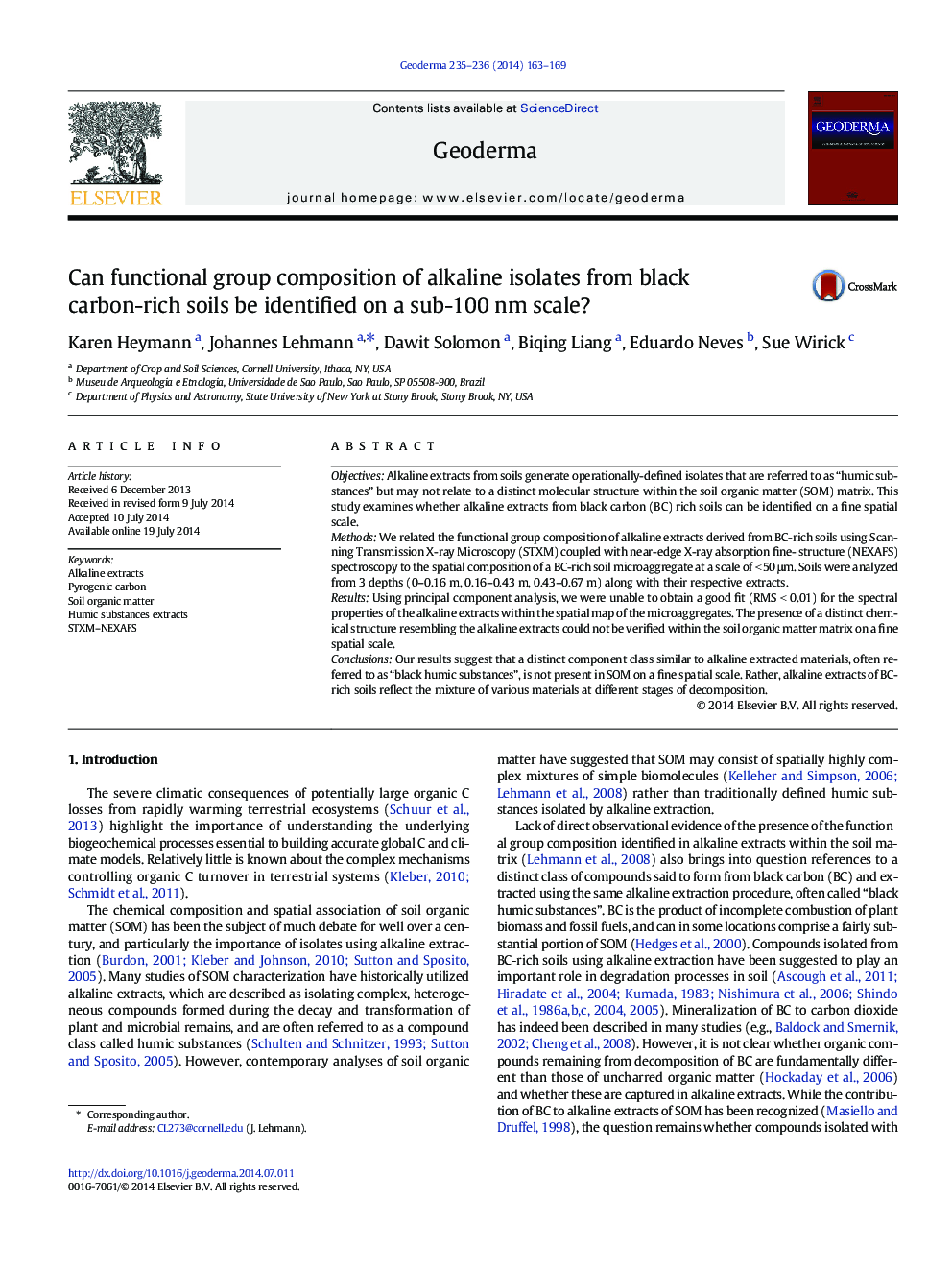| Article ID | Journal | Published Year | Pages | File Type |
|---|---|---|---|---|
| 4573315 | Geoderma | 2014 | 7 Pages |
•Aromatic C in acid insoluble alkaline extract increased with BC.•NEXAFS spectra not systematically differ for acid soluble and insoluble extracts.•Spectral signatures of alkaline extracts not found at a high spatial resolution.
ObjectivesAlkaline extracts from soils generate operationally-defined isolates that are referred to as “humic substances” but may not relate to a distinct molecular structure within the soil organic matter (SOM) matrix. This study examines whether alkaline extracts from black carbon (BC) rich soils can be identified on a fine spatial scale.MethodsWe related the functional group composition of alkaline extracts derived from BC-rich soils using Scanning Transmission X-ray Microscopy (STXM) coupled with near-edge X-ray absorption fine- structure (NEXAFS) spectroscopy to the spatial composition of a BC-rich soil microaggregate at a scale of < 50 μm. Soils were analyzed from 3 depths (0–0.16 m, 0.16–0.43 m, 0.43–0.67 m) along with their respective extracts.ResultsUsing principal component analysis, we were unable to obtain a good fit (RMS < 0.01) for the spectral properties of the alkaline extracts within the spatial map of the microaggregates. The presence of a distinct chemical structure resembling the alkaline extracts could not be verified within the soil organic matter matrix on a fine spatial scale.ConclusionsOur results suggest that a distinct component class similar to alkaline extracted materials, often referred to as “black humic substances”, is not present in SOM on a fine spatial scale. Rather, alkaline extracts of BC-rich soils reflect the mixture of various materials at different stages of decomposition.
